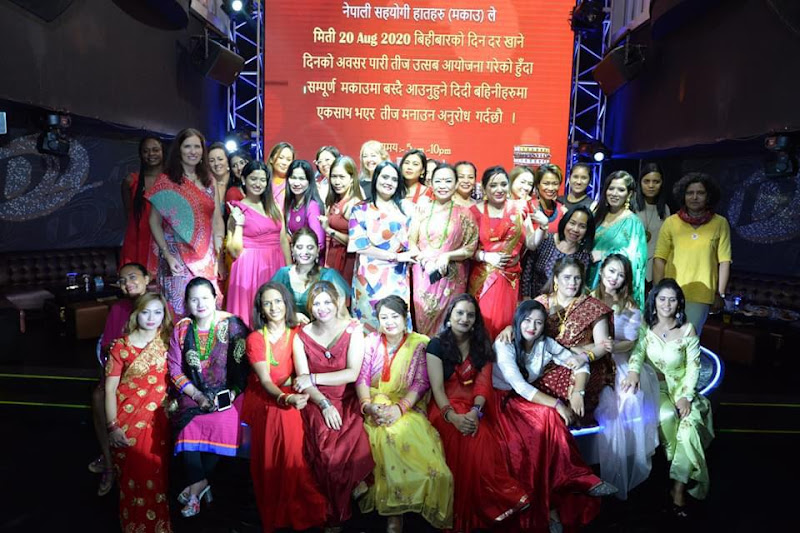The impact of modernization on the Saune Sakranti festival.
Today is Saune Sankranti, the day when the Sun enters the Cancer zodiac sign from Gemini. According to traditional beliefs, on this day, a ritual called "Kandar" is performed, where an eggplant is broken, and it is believed to bring relief from skin diseases, infections, and other ailments related to the skin. The ritual is performed after the puja of a deity named "Ratrichar," and it is believed to be effective against skin problems for the entire year.
During the ritual, various items are gathered, including Kukuradaino (a type of plant), Ratapate (a medicinal herb), Makarkanchi (a type of herb), Betlauri, Janai Laharo, dried leaves of certain plants, Jolte Nivuwa, Jolte Belauti, and various other plant materials. After the puja, the broken eggplant is used for applications on the skin to prevent skin-related issues throughout the year.
In the past, people used to perform this ritual, and after completing it, they would go to other villages, addressing people and spreading the practice, believing that it would keep them safe from various skin problems.
 |
 |
 |
 |
 |
The tradition of applying turmeric paste on the forehead and collecting the mentioned items for worship has not completely disappeared in rural areas. However, urban people, due to their busy schedules, might not have the opportunity to perform the traditional rituals. Nevertheless, young girls might not be familiar with identifying these specific plants. After applying turmeric paste, the ritual included making a dish called "Chichchar" by roasting it in the husk of unhusked rice.
The juice extracted from the thorns of the turmeric flower, which bloomed during the night, was used to create colorful patterns on hands. This juice was mixed with the hand and then used to draw patterns on the hands, creating a temporary tattoo. To enhance the color, the juice-soaked thorn was placed in a cloth and kept overnight. During the day, the juice collected from the soaked thorn was used to make intricate designs on the hands, and the competition to showcase the most beautiful patterns among girls was quite prevalent. Yesterday, someone posted the artistry on social media after applying Mehendi on their hands. The above-mentioned method has been derived from the folklore of Ekadesh.
In Myagdi-7 of Tanahun district, the tradition of celebrating Saune Sankranti still continues. The Bholi Paltan tradition of Saune Sankranti involves various activities. People in the public square, such as Archale, Dadangaun, Harsapur, Daghoom, and Chunder, used to cut down the plants known as "Khurro" (the term used for the edible part of the plant) from different places and gather them in the Chheu. After collecting, the Khurro was peeled, and a dish called "Beri Kutte" was made, which was then distributed among the people. To make the day more enjoyable, a competition was held where people from different locations participated, and the one who could cut the Khurro with less hand movement was considered the winner. This event was especially exciting for children, and they would compete to display their artistic skills. Yesterday, someone posted a picture on Facebook with Mehendi applied to their whole palm. The information about this method was obtained from the folklore of Ekadesh.
In Tanahun district, Myagdi-7, the Saune Sankranti festival is still celebrated, and the modernization has had an impact on it. The Bholi Paltan tradition of Saune Sankranti involves various activities. The public event, like Hooniyo, included dancing. Previously, the tradition of cutting Khirro (edible part of a plant) from different places and gathering in the Chheu in the public square was widespread. After collecting, Khirro was peeled, and a dish called Beri Kutte was made, which was then distributed among the people. The tradition of Bholi Paltan was celebrated differently in the past. On Saune 2, the people of Archale, Dadangaun, Harsapur, Daghoom, and Chunder, among other places, would cut the plants known as Khirro from various locations. The collected Khirro would then be peeled and used to make a dish called Beri Kutte. This dish would be distributed to the people, and it was considered a festive meal. In the past, this day was not only about enjoying Beri Kutte but also about dancing. The day before Saune Sankranti, people from different places would gather in the public square, and each group would show off its dancing skills. The dance was considered a competition, and it was judged based on the number of hand movements. The group with the fewest hand movements was declared the winner. This practice continued from morning till evening, and it was an enjoyable event for the people. In addition to the dance competition, there was another tradition called Vahabis Hareko. On Saune 2, people would come to a specific location with their decorated palm and display it to others. This practice was also known as Bholi Paltan. The person with the most beautifully decorated palm would be declared the winner. This event was quite popular in the past, and people from different locations would come to showcase their artistic skills. However, in recent times, this tradition has faded, and people no longer celebrate Saune Sankranti with the same enthusiasm as before. Nevertheless, some people still follow the Bholi Paltan tradition and celebrate the festival in a simple way.







Comments
Post a Comment